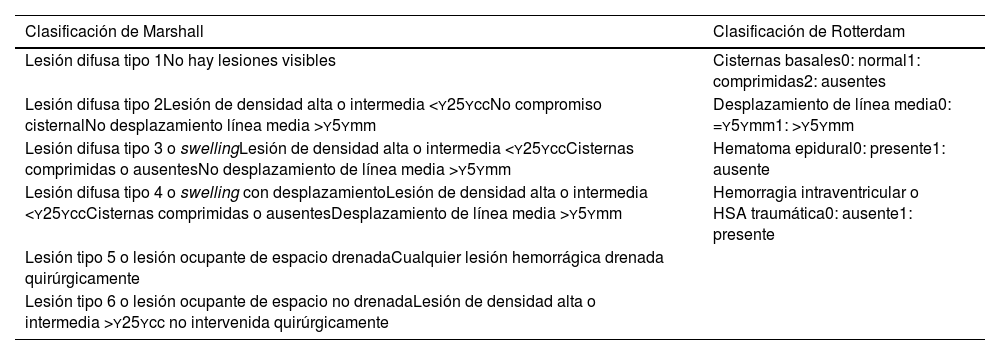El traumatismo craneoencefálico (TCE) es la principal causa de morbimortalidad en los jóvenes. La clasificación de Marshall predice la mortalidad a 6 meses y divide a los pacientes con TCE grave en 6 grupos en función de los hallazgos de la tomografía computarizada (TC) en la fase aguda del trauma. La resonancia magnética (RM) tiene valor pronóstico, ya que detecta un 30% más de lesiones traumáticas, sobre todo lesiones del tronco cerebral y lesión axonal difusa. La lesión axonal difusa asienta en 3 áreas anatómicas diferentes, su gradación varía en función de la severidad, y la afectación cerebral se extiende de manera progresiva, en zonas más profundas cuanto mayor es el trauma. Las lesiones traumáticas del tronco cerebral que asocian peor pronóstico son aquellas de localización posterior, con afectación bilateral o hemorrágicas. Este artículo analiza el valor pronóstico de la TC y de la RM en la valoración del TCE grave, y describe las principales lesiones traumáticas intracraneales.
Traumatic brain injury (TBI) is the leading cause of morbidity and mortality in young patients. The Marshall classification predicts six-month mortality and divides severe TBI patients into six groups based on CT findings in the acute phase of trauma. MRI also has prognostic value because it detects 30% more traumatic lesions, especially brainstem injury and diffuse axonal injury. Diffuse axonal injury occurs in three different anatomical areas, graded according to severity, and the greater the trauma, the deeper the brain involvement extends. Traumatic brainstem injuries with the worst prognosis are those of posterior location, with bilateral or haemorrhagic involvement. This article analyses the prognostic value of CT and MRI in the assessment of severe TBI and describes the main intracranial traumatic injuries.




















